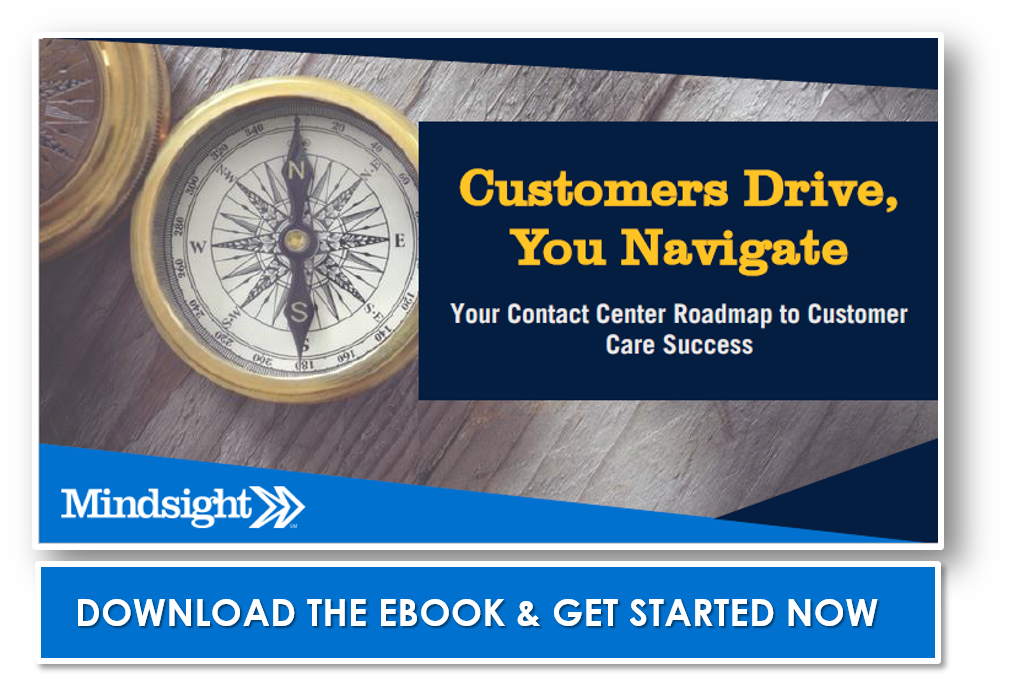May 26, 2021 by Siobhan Climer, Kleid Gjataj, and John Irey
This article was originally published in January of 2020.
After hanging up the phone, a source was recently overheard saying:
“That … wasn’t actually that bad!”
 To what was this person referring? The conversational artificial intelligence with whom they had been speaking while trying to refill a prescription. They informed us the experience was simple, responsive, and – shockingly – pleasant.
To what was this person referring? The conversational artificial intelligence with whom they had been speaking while trying to refill a prescription. They informed us the experience was simple, responsive, and – shockingly – pleasant.
It’s been almost 50 years since the first implementation of interactive voice response (IVR) technology, and sometimes it seems call centers haven’t improved much upon those first iterations. One individual described his feelings around customer service phone menus in research carried out by Boston University sociology and media researches as such:
“Just thinking about [dealing with customer service] it makes me break out into hives.”
 Yet, while some call centers seem perpetually stuck in the 1990s, many have found that by strategically implementing technology – like conversational voice automation (CVA) – they can drastically improve the customer experience, especially given customers’ low expectations.
Yet, while some call centers seem perpetually stuck in the 1990s, many have found that by strategically implementing technology – like conversational voice automation (CVA) – they can drastically improve the customer experience, especially given customers’ low expectations.
It’s not just IVR technology that is changing, though. From web-based chatbots, automated workflows, and improved quality reporting and analytics, contact centers seem to finally be ready to create a frictionless customer experience, transforming frustrated callers into satisfied customers.
Contact Center Technology Trends
To understand the changing dynamics around the customer experience and the contact center, let’s first acknowledge the impact of multichannel solutions on the industry – and how that has made everything more complex.
![]()
Technology has made it so much easier for organizations to connect with customers where they are: phone, in-person, email, social media, website, web portal, apps – you name it. To maximize this, many businesses added almost every channel, sometimes to their detriment. While these new channels may have provided more opportunity for connection, they also increased the opportunity for friction and failure.
With hybrid workplaces emerging in the wake of the COVID-19 pandemic, companies are relying on technology to maintain a high level of customer service, while also easing the burden of call handling on behalf of agents.
That’s why so much of what is happening in the contact center today is around managing connections, managing technologies, reducing friction, and creating seamless customer experiences.
The Tech Helping To Create A Frictionless Customer Experience
So what technologies are helping customer-focused leaders create frictionless experiences for customers?
Automation
![]() We hesitate to use the term ‘artificial intelligence’, as most of what contact centers do today isn’t really AI, nor will 2021 likely see widespread adoption of true AI technologies at the call center level.
We hesitate to use the term ‘artificial intelligence’, as most of what contact centers do today isn’t really AI, nor will 2021 likely see widespread adoption of true AI technologies at the call center level.
Machine learning and automation, on the other hand, are already dramatically improving experiences for customers. Automated email workflows that respond to customer behavior with designated next steps, automated voice systems and chatbots that solve for basic customer needs, and automated reporting and analytics that collect troves of data are making an immediate difference in the utility of the contact center.
We’ll talk about cloud technology in a moment, but cloud-based contact center platforms are an integral part of the facilitation of this automation.
Analytics
Frost & Sullivan recently released a report on Midsized Call Centers’ Approach to Delivering Customer Experience. In their report, they noted that “a lot of tech trends revolve around using data to drive the customer experience.”
 It’s true. Businesses today are swimming in data (which, if data is the new oil, is slightly concerning) yet struggle with making data-driven decisions. This disconnect occurs during the process of translating data into insights. And while not every company can hire a data analyst, most companies today have access to tools and platforms that can facilitate the analysis of data.
It’s true. Businesses today are swimming in data (which, if data is the new oil, is slightly concerning) yet struggle with making data-driven decisions. This disconnect occurs during the process of translating data into insights. And while not every company can hire a data analyst, most companies today have access to tools and platforms that can facilitate the analysis of data.
Contact center platforms are part of this transformation. Cloud-based contact center platforms, specifically, enable incredible scalability and business intelligence.
Cloud Computing
 We’ll say it again. The cloud has completely disrupted the nature of the contact center. In the past, only enterprise-level organizations could afford to deploy and properly manage insights-driven platforms. The cloud changed that. Today, businesses of every size on every budget can utilize cloud-based platforms to better inform agents on the line and increase the speed by which information is transferred.
We’ll say it again. The cloud has completely disrupted the nature of the contact center. In the past, only enterprise-level organizations could afford to deploy and properly manage insights-driven platforms. The cloud changed that. Today, businesses of every size on every budget can utilize cloud-based platforms to better inform agents on the line and increase the speed by which information is transferred.
When it comes to integrating the often disparate silos of information gathered on customers – from marketing to sales to customer service – the cloud provides an opportunity to align those data elements and create a frictionless customer experience.
Softphones
Since many continue to work from home, it would be logistically overwhelming and very costly to ship physical phones to contact center agents. Installing the correct wiring for those types of phones to function properly is another issue. And then if something breaks, you don’t have an on-site IT helpdesk to deal with problems. That’s why softphones, which operate inside your computer browser, are so key. Everything call center workers need to do their jobs effectively are contained in softphone devices, which simultaneously streamlines their jobs and enhances the caller experience. Softphones not only offer decreased costs from licensing and hardware, but they allow users to make and take calls from any device and any location as long as they have an internet connection. What’s more, softphone applications offer video, messaging, contact integration and a host of valuable features that improve team communications.
Augmented Training And Enhanced Technical Support
Having a solid training program and an effective learning management system for your contact centers is key. Now that so many people are working from home, you run the risk of that problem of turnover worsening if workers don’t have the tools or know-how to remedy issues that keep them from performing their jobs. “I know of one instance where a simple Bluetooth headset breakdown took a worker out of commission for three days,” says Gjataj. In today’s remote-centric environment, where there’s no on-site training or support from colleagues, those types of issues need to be resolved quickly to prevent significant reductions in worker productivity and customer satisfaction.
How To Create A Frictionless CX
If it were easy, everyone would be doing it.
Creating a frictionless experience is a strategic process that requires in-depth understanding of personas, the customer journey, the business as a whole, and alignment to objectives.
 Our teams find the best first step is to interview all elements of the business, from customer service representatives to IT, from executive leadership to contact center managers to understand how different units view the audience and business goals.
Our teams find the best first step is to interview all elements of the business, from customer service representatives to IT, from executive leadership to contact center managers to understand how different units view the audience and business goals.
Then, after mapping the customer journey, our contact center experts align the technology to that journey – often eliminating unnecessary elements and increasing utilization of current deployments – all with the customer experience in mind.
Step 1: Discovery – Understand all elements of the business and its customers.
Step 2: Mapping – Identify all steps and potential journeys of the customer.
Step 3: Alignment – Align tech to fit objectives and improve CX.
To find out more about how our teams create a frictionless customer experience, talk with them today or read our eBook Customers Drive, You Navigate: Building Your Contact Center Roadmap To Customer Care Success.
Like what you read?
Contact us today to discuss how to create a frictionless customer experience.
About Mindsight
Mindsight, a Chicago IT services provider, is an extension of your team. Our culture is built on transparency and trust, and our team is made up of extraordinary people – the kinds of people you would hire. We have one of the largest expert-level engineering teams delivering the full spectrum of IT services and solutions, from cloud to infrastructure, collaboration to contact center. Our customers rely on our thought leadership, responsiveness, and dedication to solving their toughest technology challenges.
Contact us at GoMindsight.com.
About The Authors
John Irey is a Principal Consultant at Mindsight, an IT Services and Consulting firm located in the Chicago area. With nearly 20 years of experience in information technology, John has helped businesses of every size optimize the technology powering the contact center. He has extensive experience with contact center technologies and seeks to provide a consultative voice to contact center leaders, who rely on Mindsight’s transparency to make the best technology investments. John earned his BA/BS in Information Systems and continues to focus on how emerging technology, such as machine learning and artificial intelligence, impact the contact center. John enjoys spending his free time with his wife and two young children.
Kleid Gjataj is a Principal Consultant at Mindsight. With nearly 15 years of experience in both domestic and international consulting, Kleid has helped contact centers of all sizes to bridge the gap between business and technology. His extensive experience with IVR, ACD, screen pop, omnichannel, speech analytics, quality management, outbound dialer, and custom applications is grounded in understanding the critical value of the customer journey. Kleid earned his degree in Network and Communications Management and continues to focus on how contact center optimization helps businesses meet goals, increase efficiencies, and reduce costs.
Siobhan Climer, Science and Technology Writer for Mindsight, writes about technology trends in education, healthcare, manufacturing, and business. She writes extensively about cybersecurity, disaster recovery, cloud services, backups, data storage, network infrastructure, and the contact center. When she’s not writing tech, she’s reading and writing fantasy, gardening, and exploring the world with her twin daughters. Find her on twitter @techtalksio.
Top 5 Reasons Why Customers Hate Call Centers: A Contact Center Report


